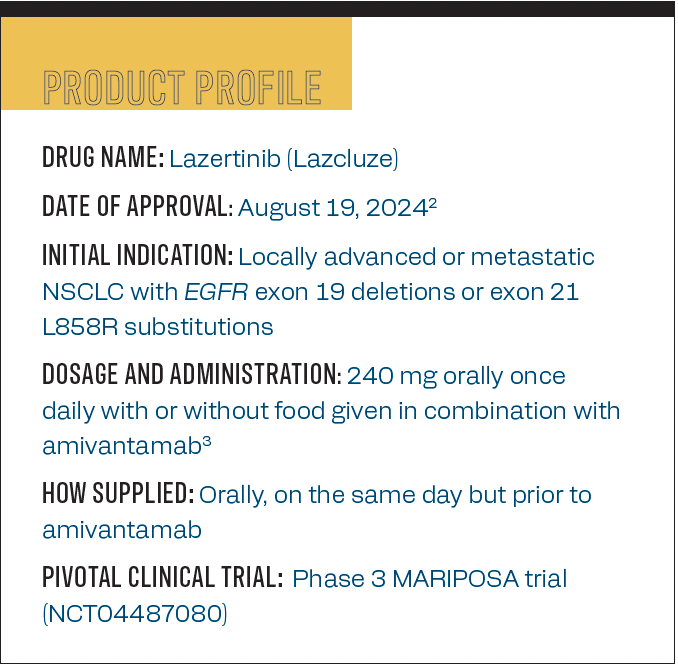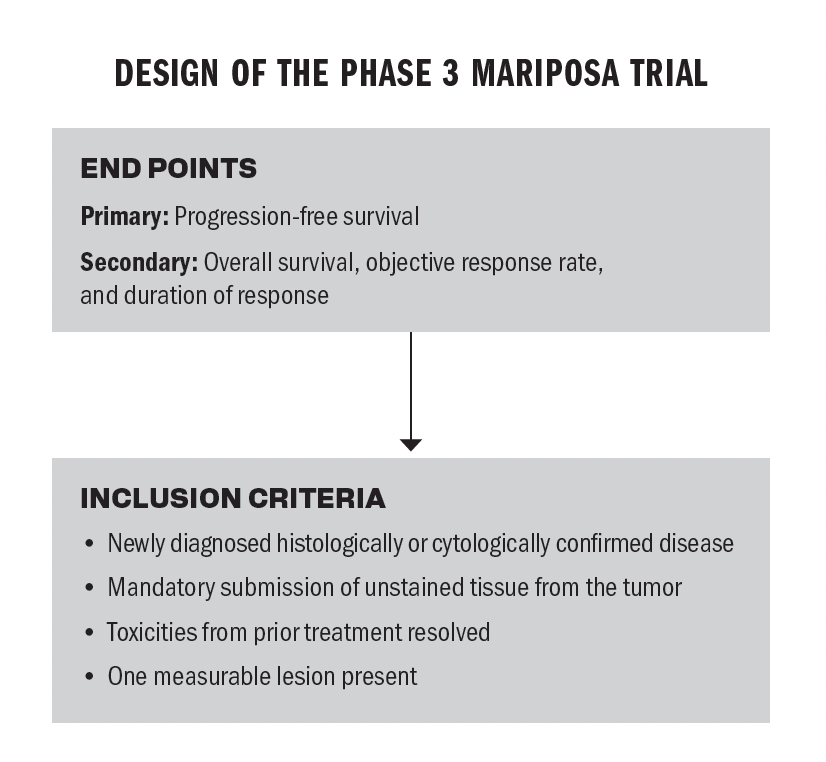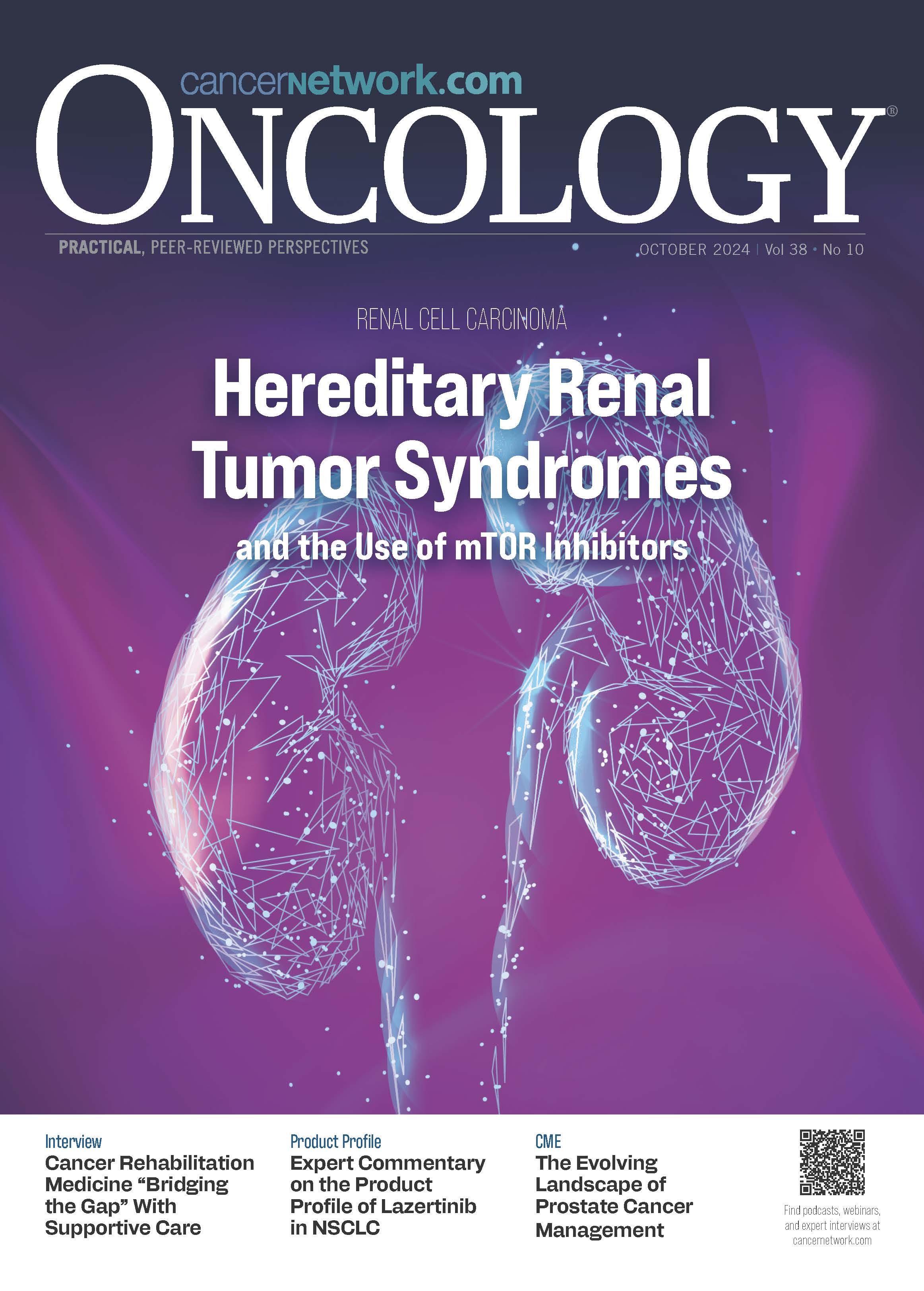Expert Commentary on the Product Profile of Lazertinib in NSCLC
Jenan Dailey, PharmD, BCAP, spoke about the approval of lazertinib plus amivantamab as first-line treatment for patients with locally advanced or metastatic NSCLC.
Jenan Dailey, PharmD, BCAP

Jenan Dailey, PharmD, BCAP, spoke about the approval of lazertinib (Lazcluze) plus amivantamab-vmjw (Rybrevant) as first-line treatment for patients with locally advanced or metastatic non–small cell lung cancer (NSCLC) with EGFR exon 19 deletions or exon 21 L858R substitutions detected by an FDA-approved test.1 She also highlighted known resistance mechanisms to the combination and adverse effects (AEs) that were most significant.
The product profile of lazertinib

Q / What is the mechanism of action of lazertinib?
Dailey / Lazertinib is a highly selective central nervous system [CNS] penetrant and third-generation tyrosine kinase inhibitor [TKI] targeting activating EGFR mutations exon 19 deletion and exon 21 L858R substitution. As with fellow third-generation EGFR TKI osimertinib [Tagrisso], lazertinib has demonstrated activity in T790M mutations that contribute to drug resistance in the targeted kinase. Lazertinib has also shown increased selectivity for mutated EGFR compared with osimertinib, which makes lazertinib’s safety profile attractive for use in combination therapy settings. It is in combination with amivantamab, a bispecific EGFR and MET receptor–targeting antibody, that lazertinib has recently gained approval. This combination is indicated for first-line use in the treatment of adult patients with locally advanced or metastatic NSCLC with EGFR exon 19 deletions or exon 21 L858R substitution mutations as detected by an FDA-approved test.
Q / How does this patient population benefit from the lazertinib plus amivantamab combination?
Dailey / This combination regimen is significantly more intense when compared with osimertinib monotherapy. Osimertinib monotherapy remains the National Comprehensive Cancer Network [NCCN] preferred first-line therapy for this subset of patients, and we know that patients generally do well on this therapy. Patients and providers will need to carefully consider who is most likely to benefit from the amivantamab and lazertinib treatment combination. Consideration can be given to patients with high-risk features associated with poorer outcomes and poor prognostic factors, as in those patients with known CNS metastases [and] TP53 comutation, as well as those with baseline detectable circulating tumor DNA. These patients may be more willing to take on a more intense regimen and may be among those to derive more benefit from the multimodal therapy.
Q / Results from the MARIPOSA study showed a reduction in disease progression or death by 30%. How significant is this compared with other available treatments?
Dailey / In MARIPOSA, the primary end point was progression-free survival [PFS]. Comparing the median [PFS] for amivantamab and lazertinib with osimertinib, the combination group showed a significantly longer median PFS of 23.7 months vs 16.6 months in the osimertinib group. It is tempting to compare data from MARIPOSA with the combination therapy data found in the phase 3 FLAURA2 trial [NCT04035486], where osimertinib plus chemotherapy was compared with osimertinib monotherapy. However, direct comparison with data presented in the FLAURA2 trial is challenging. The primary end point
was investigator-assessed PFS. The combination treatment in this study
also recorded significantly longer PFS when compared with osimertinib monotherapy among patients with EGFR-mutated, advanced NSCLC.
[The MARIPOSA] data [were] recorded with different criteria, utilizing the investigator-assessed PFS. Reported median PFS numbers were similar at 25.5 months for combination therapy and 16.7 months for monotherapy. In MARIPOSA, the primary end point of PFS was determined on the basis of a blinded independent central review according to RECIST. Serial imaging of the head was also performed in all patients, providing detailed accounts for the evaluation of treatment effects on CNS metastases; these study design features make cross-trial comparisons of PFS estimates between MARIPOSA and other trial designs not informative.
Looking at the key secondary end point of overall survival [OS] in MARIPOSA, we cannot yet conclude that there will necessarily be a benefit in OS. This will require longer follow-up to achieve significance if the trend toward survival benefit continues. However, there may be a benefit in OS for osimertinib plus chemotherapy as well. These data will also require longer follow-up to conclude. It will be interesting to follow these regimens as more data and analysis further inform the treatment landscape.
Design of the MARIPOSA trial

Q / Were there any significant AEs noted with this combination?
Dailey / The combination of amivantamab and lazertinib is associated with significant toxicities classified as grade 3 or higher, which were reported in 75% of the patients in the combination group, compared with 43% of patients in the osimertinib monotherapy group. The most common AEs reported for the amivantamab and lazertinib group were paronychia in 68% of patients, infusion-related reactions in 63%, and rash in 62%. Surprisingly, venous thromboembolism was reported in 37% of patients on the combination vs 9% of patients assigned to osimertinib. The combination group saw 83% of patients with AEs leading to dose interruption, 59% leading to dose reduction, and discontinuation in 35%. These numbers far exceed the corresponding numbers for the osimertinib group at 39%, 5%, and 14%, respectively.
Q / Were there any resistance mechanisms observed with
this treatment?
Dailey / Resistance to therapy is ever present, and not all patients will initially respond, and eventual loss of response is the expected outcome. The study rationale for combining amivantamab with lazertinib was designed to proactively address known mechanisms of resistance to current therapies. This stemmed from the findings that showed osimertinib with this activity against T790M mutation. The leading cause of resistance for first-generation EGFR TKIs was associated with improved PFS over the first-generation agents. This is in addition to the knowledge that resistance to third-generation EGFR TKIs does develop in almost all patients, with most known resistance mechanisms being secondary EGFR pathway alterations and MET pathway activation. Treatment with amivantamab and lazertinib offers broad coverage of these discussed resistance mechanisms with the consideration of preserving chemotherapy for use in later lines of therapy. Unfortunately, up to 50% of patients do not have identified resistance mechanisms to the standard of care osimertinib therapy.
Q / Where do you see this agent headed in the future?
Dailey / Lazertinib has only been approved in combination setting with amivantamab. This combination has now been added as an NCCN first-line therapy option for EGFR exon 19 deletion or exon 21 L858R mutations, either discovered prior to or during first-line systemic therapy. To date, osimertinib monotherapy remains the NCCN preferred first-line therapy in this space. If the combination does show an increased OS benefit with longer follow-up, this will become an increasingly attractive therapy option. Increases in PFS and OS must still be weighed against increases in toxicity and detriment to the quality of life for the patient; as always, shared decision-making will be critical.
Q / How do you expect to implement this treatment into your clinical practice?
Dailey / Patient selection for first-line treatment of NSCLC with amivantamab plus lazertinib will be based on the presence of EGFR exon 19 deletions or exon 21 L858R substitution mutations, as detected by an FDA-approved test. Selection among the approved first-line therapy options will be tailored by patient-specific risk factors, performance, status, and shared decision-making. The amivantamab and lazertinib regimen demonstrates significant activity and benefit but comes with significant increases in time in the clinic, toxicity, and cost.
References
- Rybrevant (amivantamab-vmjw) plus Lazcluze (lazertinib) approved in the U.S. as a first-line chemotherapy-free treatment for patients with EGFR-mutated advanced lung cancer. News release. Johnson & Johnson. August 20, 2024. Accessed August 20, 2024. https://tinyurl.com/yxc8u8t4
- Cho BC, Lu S, Felip E, et al; MARIPOSA Investigators. Amivantamab plus lazertinib in previously untreated EGFR-mutated advanced NSCLC. N Engl J Med. Published online June 26, 2024. doi:10.1056/NEJMoa2403614
- Lazcluze. Prescribing information. Janssen Science; 2024. Accessed September 16, 2024. https://shorturl.at/Zwsmr
- Planchard D, Jänne PA, Cheng Y, et al; FLAURA2 Investigators. Osimertinib with or without chemotherapy in EGFR-mutated advanced NSCLC. N Engl J Med. 2023;389(21):1935-1948. doi:10.1056/NEJMoa2306434
